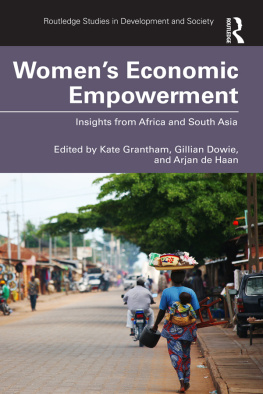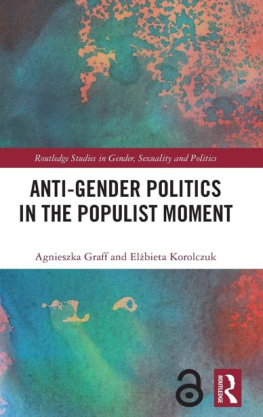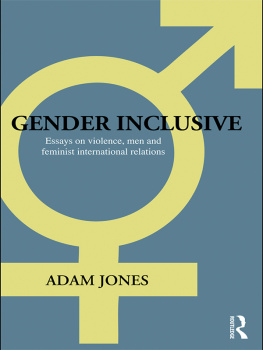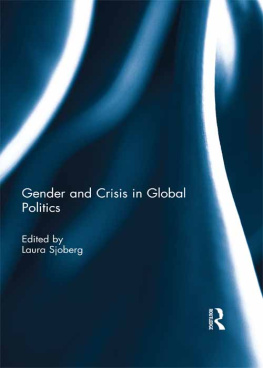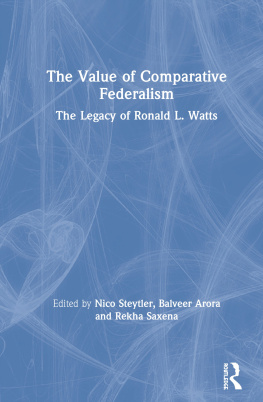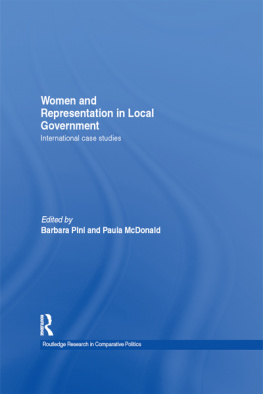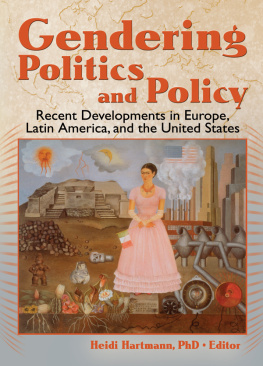
VULNERABLE BODIES
Gender in a Global/Local World
Series Editors: Jane Parpart, Pauline Gardiner Barber and Marianne H. Marchand
Gender in a Global/Local World critically explores the uneven and often contradictory ways in which global processes and local identities come together. Much has been and is being written about globalization and responses to it but rarely from a critical, historical, gendered perspective. Yet, these processes are profoundly gendered albeit in different ways in particular contexts and times. The changes in social, cultural, economic and political institutions and practices alter the conditions under which women and men make and remake their lives. New spaces have been created - economic, political, social - and previously silent voices are being heard. North-South dichotomies are being undermined as increasing numbers of people and communities are exposed to international processes through migration, travel and communication, even as marginalization and poverty intensify for many in all parts of the world. The series features monographs and collections which explore the tensions in a global/local world, and includes contributions from all disciplines in recognition that no single approach can capture these complex processes.
Also in the series
(Un)thinking Citizenship Feminist Debates in Contemporary South Africa
Edited by Amanda Gouws
ISBN 0 7546 3878 2
Fashioning Inequality The Multinational Company and Gendered Employment in a Globalizing World
Juanita Elias
ISBN 0 7546 3698 4
Setting the Agenda for Global Peace Conflict and Consensus Building
Anna C. Snyder
ISBN 0 7546 1933 8
Vulnerable Bodies
Gender, the UN and the Global Refugee Crisis
ERIN K. BAINES
First published 2004 by Ashgate Publishing
Published 2016 by Routledge
2 Park Square, Milton Park, Abingdon, Oxon OX14 4RN
711 Third Avenue, New York, NY 10017, USA
Routledge is an imprint of the Taylor & Francis Group, an informa business
Copyright 2004 Erin K. Baines
Erin K. Baines has asserted her right under the Copyright, Designs and Patents Act, 1988, to be identified as the author of this work.
All rights reserved. No part of this book may be reprinted or reproduced or utilised in any form or by any electronic, mechanical, or other means, now known or hereafter invented, including photocopying and recording, or in any information storage or retrieval system, without permission in writing from the publishers.
Notice:
Product or corporate names may be trademarks or registered trademarks, and are used only for identification and explanation without intent to infringe.
British Library Cataloguing in Publication Data
Baines, Erin K.
Vulnerable bodies : gender, the UN and the global refugee crisis. - (Gender in a global/local world)
1. Office of the United Nations High Commissioner for Refugees 2. Women refugees - Social conditions 3. Women refugees - Social conditions - Case studies 4. Humanitarian assistance 5. Humanitarian assistance - Case studies
I. Title
362.8'7'082
Library of Congress Cataloging-in-Publication Data
Baines, Erin K., 1969-
Vulnerable bodies : gender, the UN and the global refugee crisis / Erin K. Baines.
p. cm. -- (Gender in a global/local world)
Includes bibliographical references and index.
ISBN 0-7546-3734-4
1. Office of the United Nations High Commissioner for Refugees. 2. Women refugees--Government policy--International cooperation. 3. Women refugees--Services for--International cooperation. 4. Womens rights--International cooperation. 5. Women and war. I. Title. II. Series.
HV640.3.B35 2004
362.87'526'082--dc22
2004048258
Transfered to Digital Printing in 2012
ISBN 9780754637349 (hbk)
Contents
Gender mainstreaming has been the clarion cry of humanitarian agencies for over two decades. At the United Nations High Commissioner for Refugees, the organization has capitalized on the images of refugee women and children and the efforts to promote responses to their specific needs for over ten years. In 1989 UNHCR published its first policy on refugee women. The Guidelines on the Protection of Refugee Women followed swiftly and over the next fourteen years, four consecutive Senior Coordinators for Refugee Women shaped and shepherded the policies into practice. Through three multi million dollar Initiatives specifically designed to promote the rights of women in Bosnia, Rwanda and then Kosovo, numerous analyses and subsequent redrafting of more gender sensitive manuals and guidelines, to the deployment of regional gender specialists to focus on the rights of refugee women around the world, UNHCR has applied itself to the promulgation of the international gender equality agenda.
In the early days the United Nations High Commissioner for Refugees was seen by many as a leader within the United Nations family on promoting the rights of refugee women and later gender mainstreaming. More recently it has kept pace with thinking among the humanitarian agencies. Successes have often been ad hoc rather than structural or systematic and to the dismay of feminists, gender equality advocates, humanitarian workers, United Nations staff and refugee and displaced women, after over a decade of policies and guidelines on refugee women, gaps between the pronouncement and application of these policies remain.
This book provides a stimulating analysis of why the worthy goal of gender equality has fallen short of its potential within the United Nations refugee agency and the United Nations system.
The author describes dramatic changes to the geo-political landscape in the last decade that have not always been effectively accounted for in the evolution of gender mainstreaming strategies and the competition for rights that underpin gender equality competing for space in a crowded humanitarian agenda. In particular, the rights of refugees have regularly been a casualty to national security concerns and electorates that have become cynical and fatigued by the huddled masses.
And so in the face of persistent efforts that have not always been as successful as hoped, the multifarious conundrum of gender mainstreaming in the United Nations has been searching for a fresh eye. Bravely invoking a hybrid of feminist international relations theories to analyze gender equality norms in juxtaposition with the evolving concepts of humanitarian principles and practice, this book unravels some of the barriers we recognize as well as some hitherto un named obstacles. The approach is controversial but sound, challenging but grounded in sound analysis and offers good news along with criticism.
The reward for reading this work is that it is not a simple academic treatise defining the problem. The author offers lessons that are both, specific to the organization as well as relevant to broader IR and feminist theory. For the United Nations refugee agency, the business of responding to real emergencies as well as external pressures that do not always coincide with the agenda of the organization or the needs of its clients leaves little time for reflection. This book offers concrete lessons that will resonate with gender advocates, policy makers and operational staff.



